10 Best Places to see the Northern Lights
- By Seema
- Updated on July 21, 2025
The Northern Lights, also known as the Aurora Borealis, are a spectacular natural light display in the Earth’s sky, typically observed in high-latitude regions around the Arctic and Antarctic. When charged particles, such as protons and electrons, collide with gases in the upper atmosphere of Earth, an aurora is created. The collisions generate tiny flashes that illuminate the sky in a rainbow of colors and dynamic light patterns, resembling curtains, rays, and spirals.
The lights shift quickly from faint, barely discernible veils to dazzling cones that seem to cover the sky. The auroras “dance” or flicker across the sky as billions of flashes follow one another. The Northern lights we see are bluish-green, with occasional red or lilac veils.
Galileo chose the term “aurora borealis” in 1619, derived from the Roman goddess of dawn and the Greek name for the north wind. The aurora australis, also known as the southern lights, shares features similar to the aurora borealis and shifts in tandem with changes in the northern auroral zone.
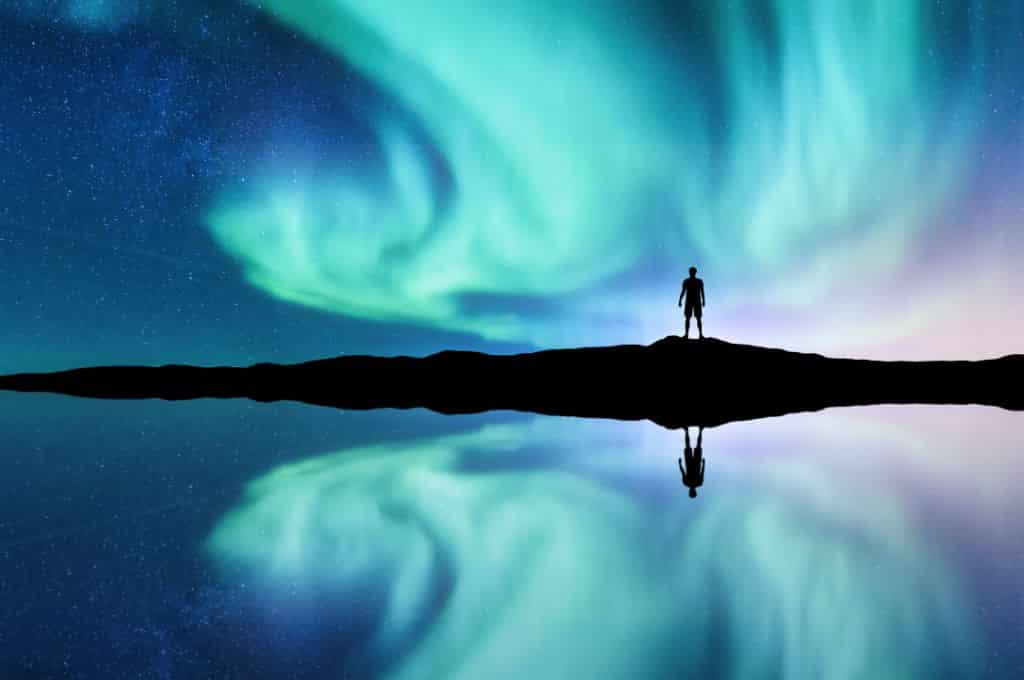
Best Time to See Northern Lights
Witnessing the Northern Lights is never guaranteed, as they are a natural phenomenon. The best time to see them is during the aurora season, which begins in late August and lasts until mid-April. The months of September and March are especially favorable because of increased solar activity during the equinoxes. It is rare to see the Northern Lights between April and August because many of the best viewing locations are so far north that they have almost constant daylight during the summer. Several factors influence the visibility of the Aurora Borealis:
- Darkness: The Northern Lights are prominent during the polar night when the Northern Hemisphere goes through prolonged periods of darkness. Usually, this occurs in late November or early January.
- Solar Activity: The interaction of charged solar particles with the Earth’s magnetic field is what causes the Northern Lights. Solar activity impacts the intensity and frequency of the Aurora Borealis.
- Weather Conditions: Clear, dark skies are essential for the most optimal Northern Lights viewing. Selecting a spot with minimal light pollution and clear skies is important because cloud cover can obstruct the panorama.
- Geomagnetic Activity: The chance of seeing the Northern Lights increases with high levels of geomagnetic activity, which are frequently gauged by the Kp index. Generally speaking, an Aurora viewing experience is best achieved with a Kp index of 4 or above.

To increase your chances of seeing the Northern Lights, plan your trip to one of the prime viewing locations during peak months, keeping an eye on solar activity projections and local weather conditions. Furthermore, getting away from city lights and finding an area with a clear northern horizon will improve your chances. Although there are no guarantees when it comes to seeing the Northern Lights, being in the right place at the right time increases the probability of witnessing an incredible display.
Best Places to See Northern Lights
The splendor of the oscillating lights, in various shapes and forms, dancing across the sky, is an experience that everyone must witness at least once in their lifetime. The most optimal locations to see the Northern Lights are usually within the “auroral oval”- a rough ring around the Earth’s magnetic northern pole, located near 60 to 70 degrees latitude. The following are some of the top places to see the Northern Lights:
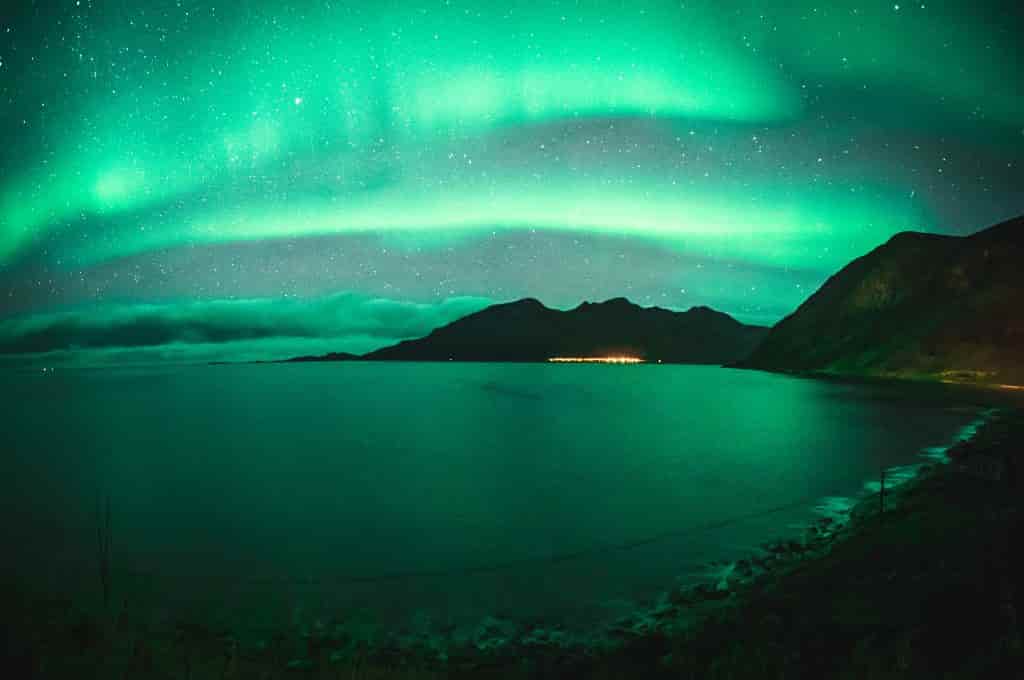
1). Tromsø, Norway
Located in the heart of the aurora zone in the Norwegian Arctic, Tromsø is considered one of the best places on Earth for viewing the Northern Lights. The city is situated at approximately 69 degrees north latitude, well above the Arctic Circle. Because the region is so close to the magnetic pole, the Northern Lights are more frequent and visible. In Tromsø, the winter solstice is marked by the polar night, when the sun does not rise above the horizon for an extended duration. This prolonged darkness creates the perfect setting for viewing the Northern Lights. According to statistics, the Tromsø region has the highest number of Aurora sightings in the world.
Aurora viewing is even more spectacular in Tromsø because of the surrounding topography, which features mountains, fjords, and stunning landscapes. The reflections of the Northern Lights on the water and snow add to the overall experience. The most optimal viewing months are typically October through mid-March. If you visit in January, be sure to attend the annual Northern Lights Festival, where locals and tourists alike come together to celebrate with live performances, fun outdoor activities, and other exciting events. The polar night can also be seen in the Lofoten islands, Kirkenes, Svalbard, and Nordkapp, all of which are excellent locations for aurora hunting in Norway.
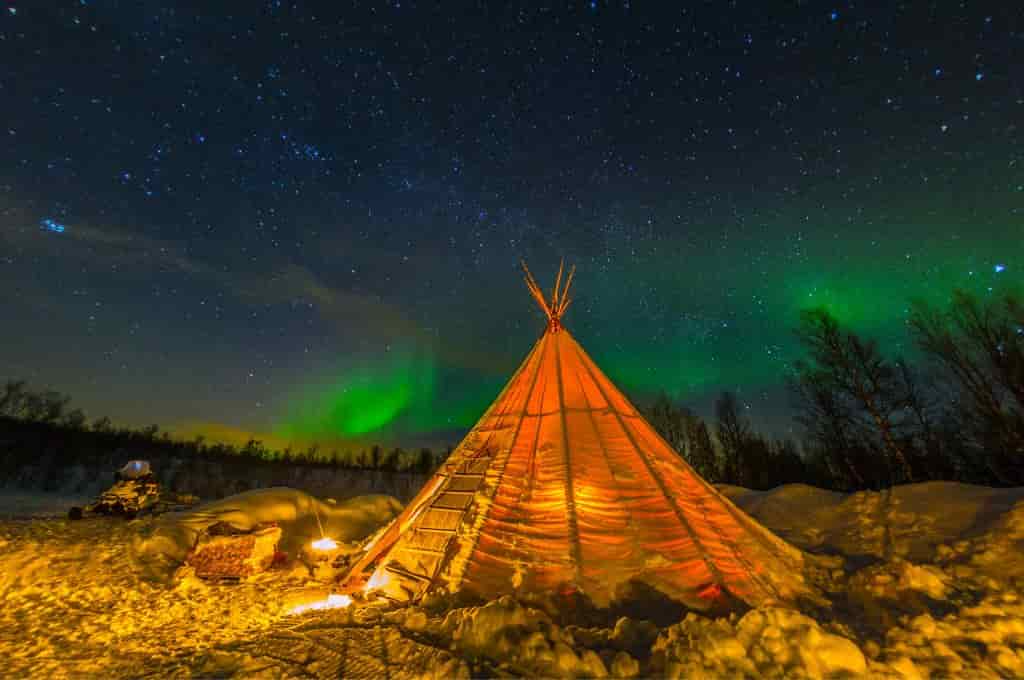
2) Swedish Lapland, Sweden
The northernmost region of Sweden, known as Swedish Lapland, lies above the Arctic Circle. Due to its high latitude, it is one of the most popular spots to witness the Northern Lights, also known as the Aurora Borealis. During the winter, Swedish Lapland also experiences the polar night, and extended darkness creates ideal conditions for viewing the spectacle without interference from natural daylight. The low population density in many parts of Swedish Lapland contributes to low levels of light pollution. All of these factors improve Aurora’s visibility, resulting in a more transparent and more vivid display.
The region’s diverse landscapes, which include forests, lakes, and open tundra, provide picturesque settings for chasing the elusive lights. Abisko National Park in Swedish Lapland has some of the best conditions in the world for seeing the Northern Lights. Kiruna and Jukkasjärvi are other places to hunt for the Aurora Borealis in Sweden. The northern lights dance across the sky above Swedish Lapland from late August to mid-April. The most optimal viewing times are usually between 18:00 and 02:00 when the sky is dark.
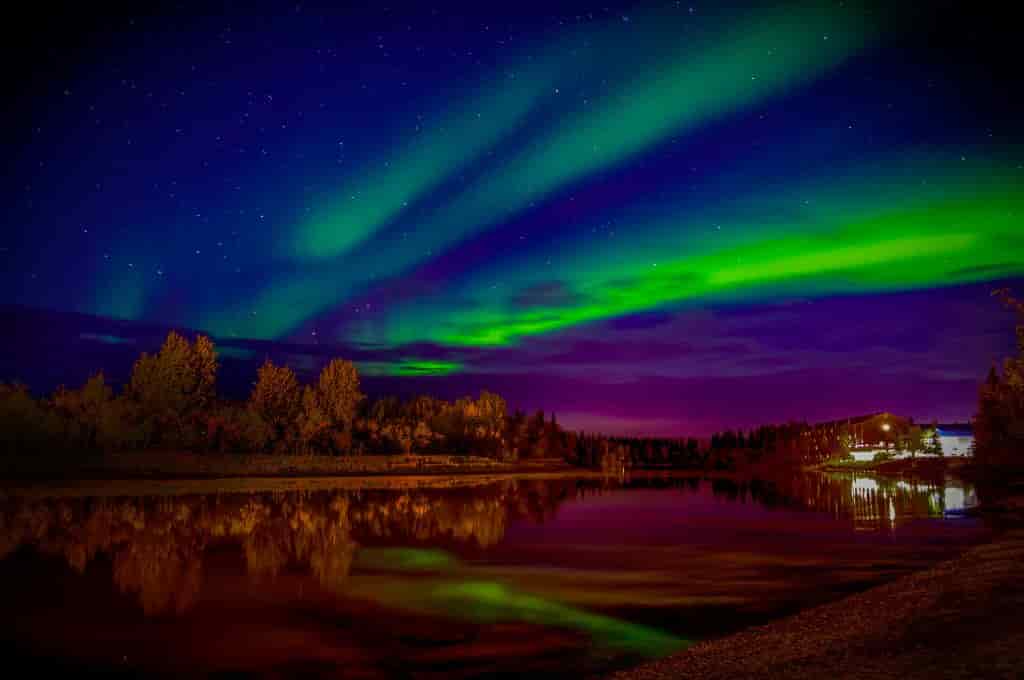
3) Fairbanks, Alaska
Fairbanks is located near the magnetic pole, which increases the likelihood of witnessing intense and frequent displays of the Aurora Borealis. Due to the low precipitation and distance from the coast, Fairbanks experiences consistently clear nights and low light pollution, making it an ideal location for viewing the jaw-dropping spectacle.
During aurora season, which lasts from August 21 to April 21, visitors can expect to spot the lights on four out of every five clear nights. To maximize their chance of seeing the Northern Lights, visitors to Fairbanks frequently venture to remote locations like Chena Hot Springs and Clear Summit. Aurora-chasers can go on a guided Northern Lights tour, view them from a heated lodge, go on a dog sled adventure, or even fly above the Arctic Circle to see the breathtaking display.
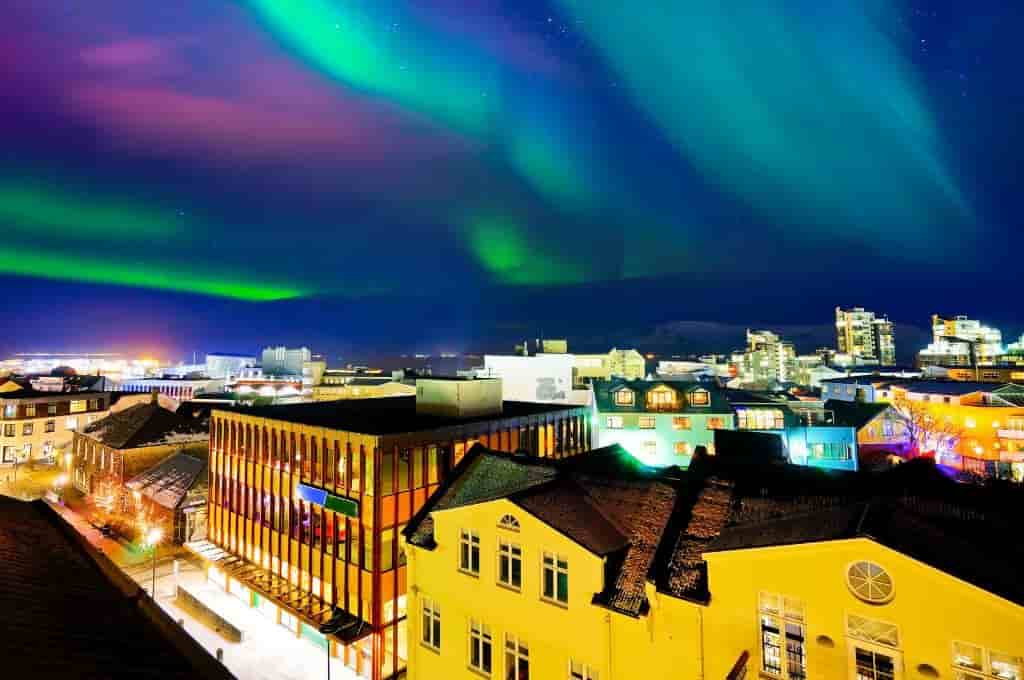
4). Reykjavik, Iceland
Reykjavik is relatively close to the Arctic Circle, providing a higher latitude. Under certain conditions, the capital city can be a good place to see the Northern Lights, though many enthusiasts prefer to venture outside the city to improve their chances. When compared to larger towns, Reykjavik has relatively low light pollution. This enables people to witness the Northern Lights from within the city limits, especially during periods of high auroral activity.
In the winter, Reykjavik nights can stretch up to twenty hours, providing ample opportunities to spot green, red, and purple lights in the pitch-black sky. While not guaranteed, the Aurora Borealis can be seen in Reykjavik for more than 100 nights per year, particularly during the solar maximum, a period of increased solar activity that is conducive to the Northern Lights. To minimize light pollution and increase your chances of seeing the natural phenomena, visit the dark areas within the city, such as the Seltjarnarnes Peninsula and Oskjuhlid Hill. Alternatively, you can go on a guided Northern Lights tour, where a guide will help you find the best viewing locations.
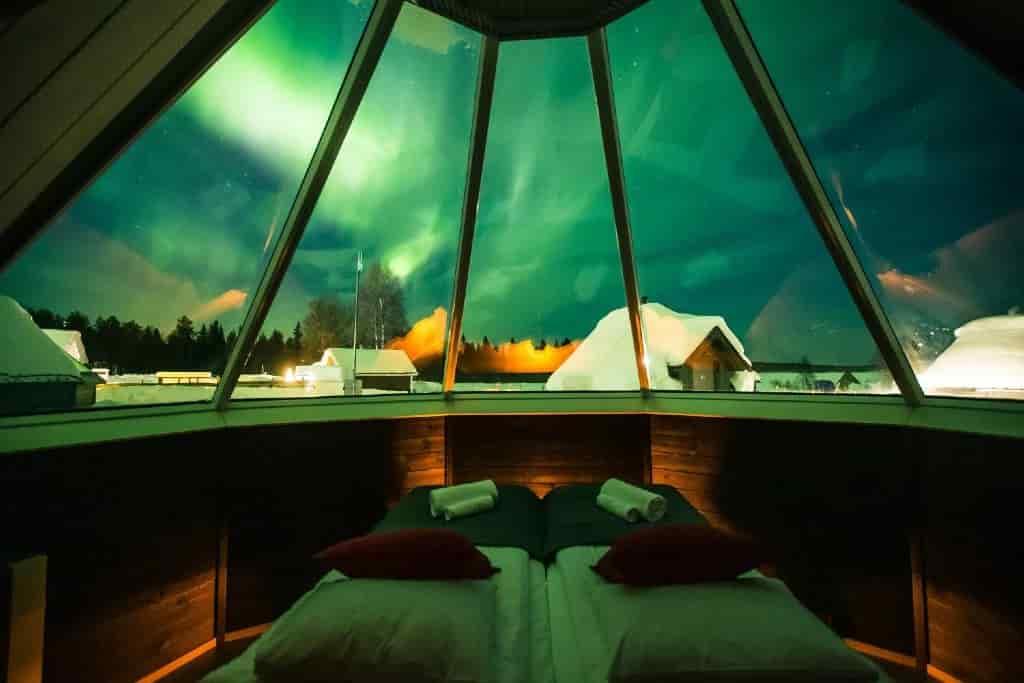
5). Rovaniemi, Finland
Expect lots of snow and frequent sightings of the Northern Lights as the town is situated above the Arctic Circle. During the winter months, Rovaniemi experiences periods of polar night, creating ideal conditions for the Northern Lights to appear. Inland areas of Finnish Lapland, including Rovaniemi, tend to have clear skies and low light pollution, which is essential for viewing the Aurora Borealis. The lights appear over Finland about 200 nights per year.
Numerous tour companies offer guided Northern Lights tours, and Rovaniemi has established a robust infrastructure for Aurora tourism. These tours often take visitors to prime locations that are free from light pollution, thereby increasing the likelihood of a mystical sight. Rovaniemi is known as Santa Claus’ official hometown, and the Santa Claus Village is a major draw for travelers. Viewing the Northern Lights can be combined with other wintertime events and activities in the region. Here, you can catch the lights from October through March, though occasionally, during extended periods of clear weather, a show may occur a little earlier or later.

6) Greenland
Due to its high latitude and proximity to the Arctic Circle, an extensive region of Greenland is perfectly positioned to see the Northern Lights. The frequency and intensity of the aurora displays are enhanced because it is closer to the magnetic pole. Due to Greenland’s small population and remote location, light pollution is minimal, resulting in clearer and more vivid displays against the dark Arctic sky.
The twinkling lights can be viewed from Nuuk (Greenland’s capital), and Kangerlussuaq and Sisimiut are good locations to base yourself in. If you don’t like the cold, southern Greenland may be a better option; however, if you’re feeling adventurous, consider booking a trip to the gorgeous town of Ilulissat. The vast and unspoiled wilderness of Greenland provides a perfect setting for witnessing the dazzling Northern Lights. Due to the consistent, pleasant weather brought about by the lack of rain and low wind, viewing the Northern Lights in Greenland is easier. The Aurora Borealis can be seen in Greenland from the end of August to the beginning of April, with the best time being from November to mid-March.
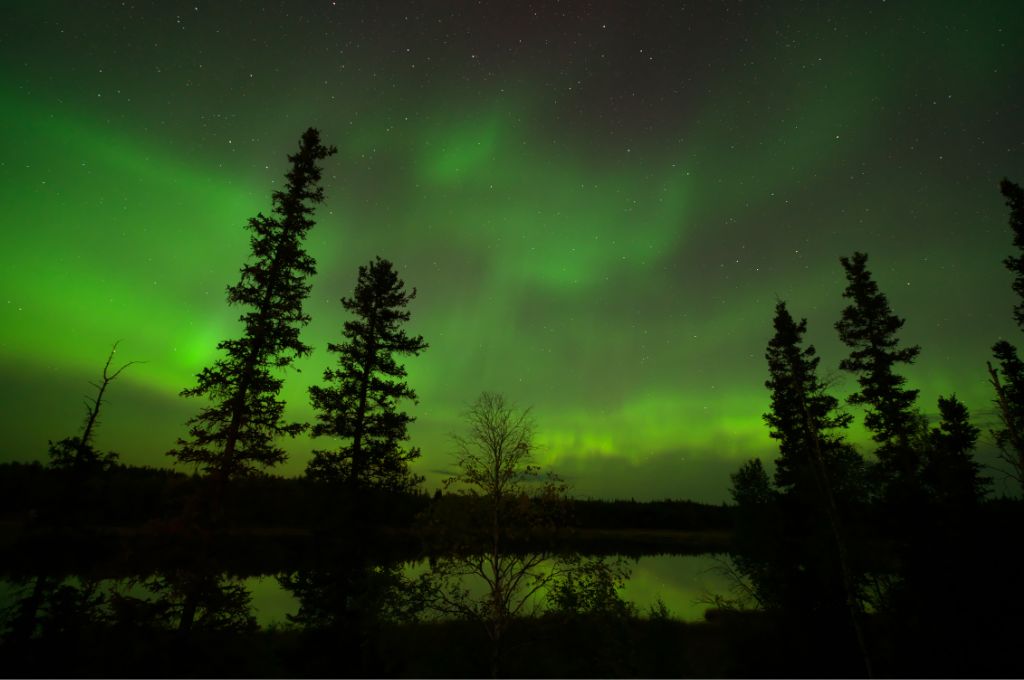
7) Yellowknife, Canada
Yellowknife is positioned at 62.4540° N, right in the center of the Auroral Oval – a region of vigorous and recurrent geomagnetic activity. This geographical advantage makes it a prime location for viewing the Northern Lights, and the displays are usually more frequent and vibrant. A period of polar night, with near-perfect visibility and low light pollution in the region, has its own positive effects on the visibility of the Aurora Borealis.
Yellowknife is known as the Northern Lights Capital of North America, as the Northern Lights may be observed up to 240 nights per year. Great Slave Lake, Aurora Village, and Prelude Lake are just a few of the places in and around Yellowknife where you can see the surreal spectacle. Aurora Village is a purpose-built facility near Yellowknife, offering heated tepees and an unhindered view of the night sky.
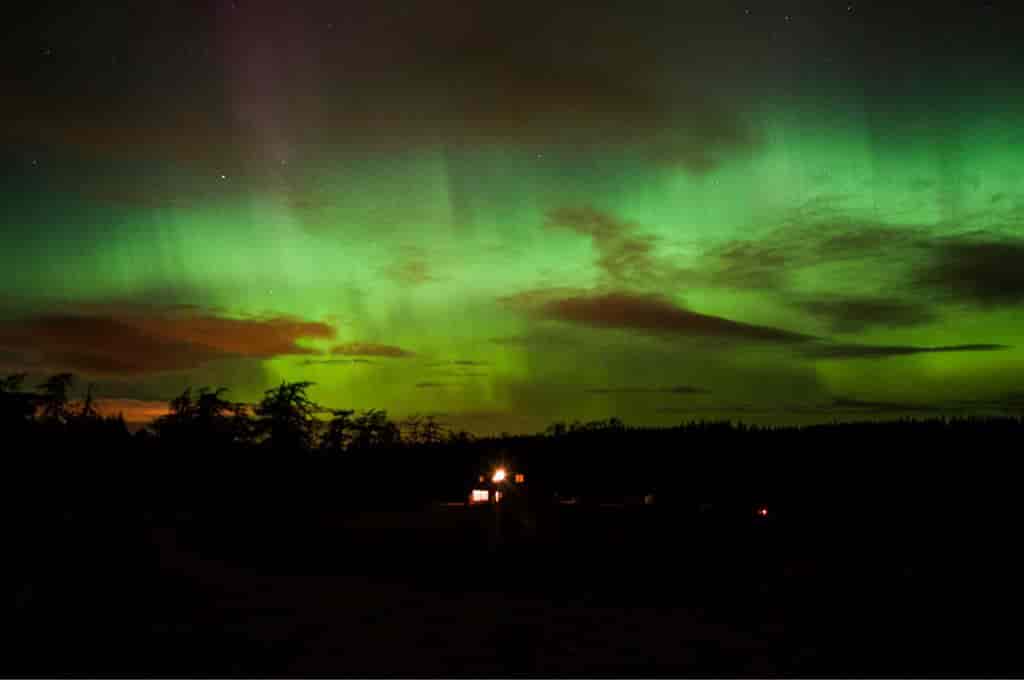
8) Orkney, Scotland
Although you can spot the Northern Lights anywhere in Scotland under the right conditions, northern Scotland—which lies at a latitude similar to parts of Norway—is where you are most likely to see them. Orkney is not as far north as some other Northern Lights hotspots, but it is still at a reasonably high latitude when compared to more southern locations. Geomagnetic activity is a significant factor in the visibility of the Northern Lights. The Aurora Borealis is visible at lower latitudes, including Orkney, during periods of high geomagnetic activity.
Orkney has extended periods of darkness in the autumn and winter, which increases the likelihood of witnessing an unforgettable light show. Minimal light pollution and cloud cover always boost the chances. Many spots in Orkney provide an unobstructed panorama of the Northern Lights, including the Broch of Gurness, Birsay coastline, Inganess Bay, and Wideford Hill.
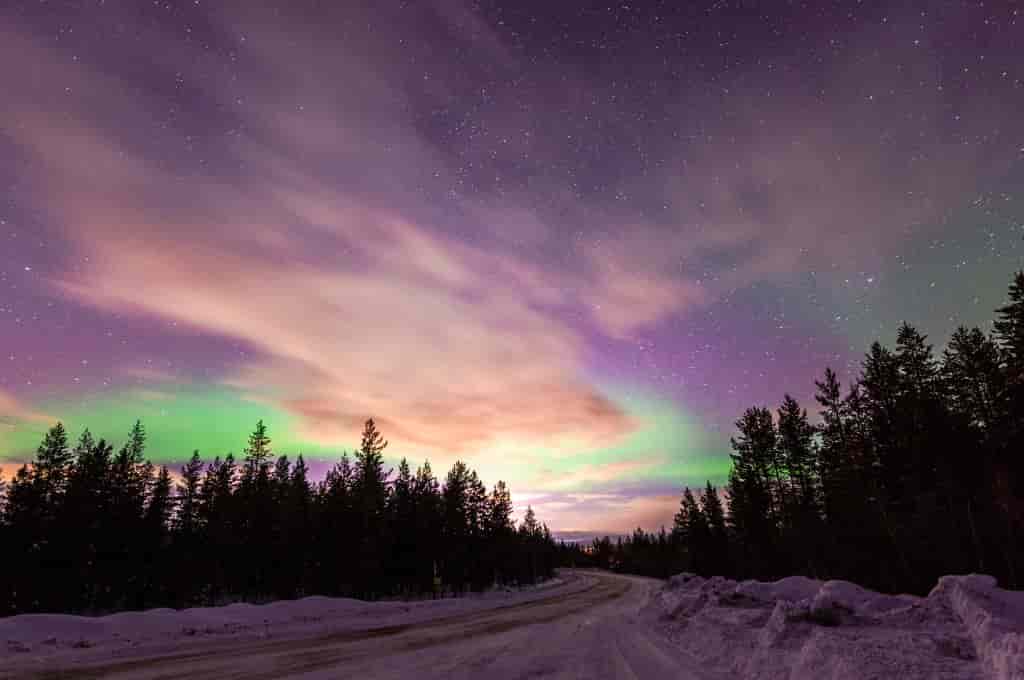
9) Murmansk, Russia
Murmansk sits above the Arctic Circle, enhancing your odds of spotting the Northern Lights. It is Russia’s northernmost city and one of the best places to observe this phenomenon firsthand. Murmansk has more than 40 days of uninterrupted darkness, which means there are plenty of chances to see the Aurora Borealis. The Northern Lights hunting season in Murmansk typically begins on September 1st and ends on April 15th.
With its snow-covered terrain, frozen lakes, and distinctive northern flora, the Arctic landscape that envelops Murmansk offers an unusual and idyllic spot for experiencing the Northern Lights. You can visit the Lenin nuclear icebreaker and go snowboarding in the nearby Khibiny mountains while hunting for the elusive lights in the Murmansk Region.

10) Yukon, Canada
Canada appears to be quite a distance to travel for aurora spotters, but when it is someplace like the Yukon, the journey is worth the effort. Yukon is an ideal location to view the Northern Lights, as it is situated within the Auroral Oval, an area characterized by high levels of aurora activity. Depending on cloud cover, light pollution, and the night’s auroral activity, you can spend several hours watching the vibrant spectacle. Dawson City, Kluane National Park, and Whitehorse in Yukon are just a few of the places that get regular visits from the lights. The Aurora Borealis in Yukon is often described as phenomenal, with the light show highlighting some of the region’s stunning landscapes and untamed wilderness.
